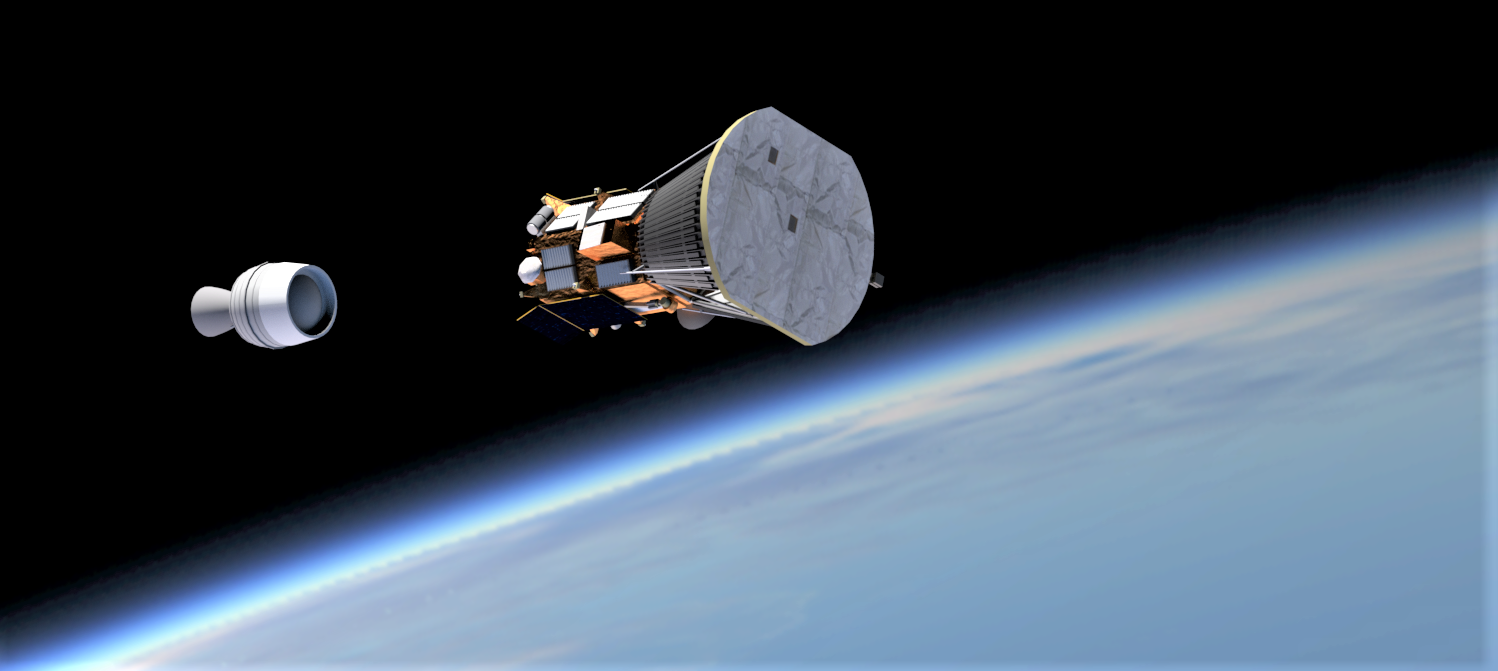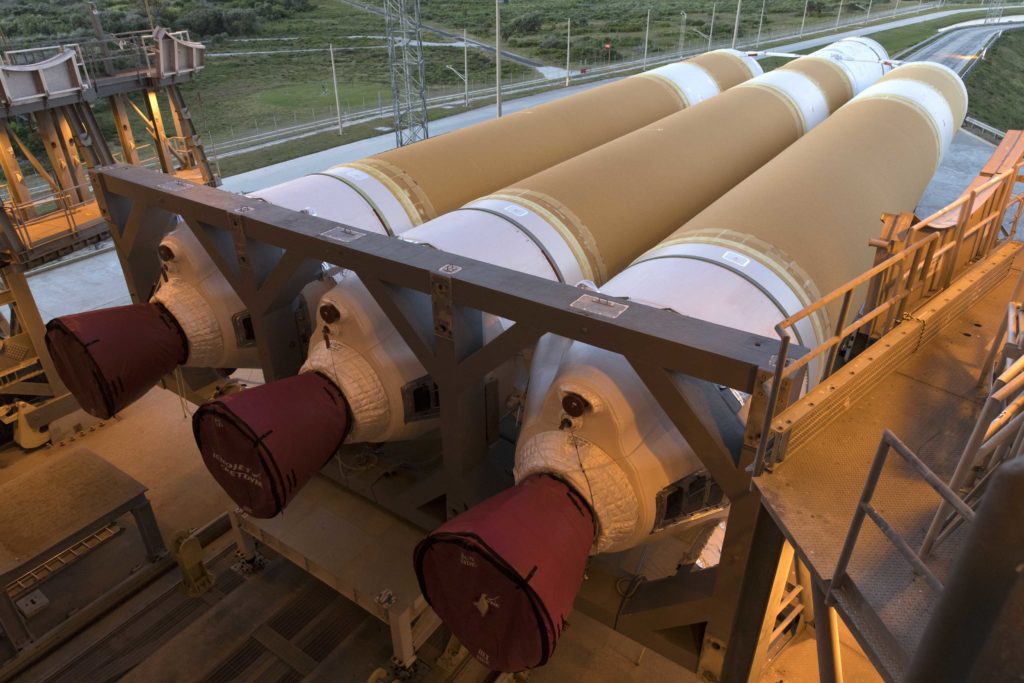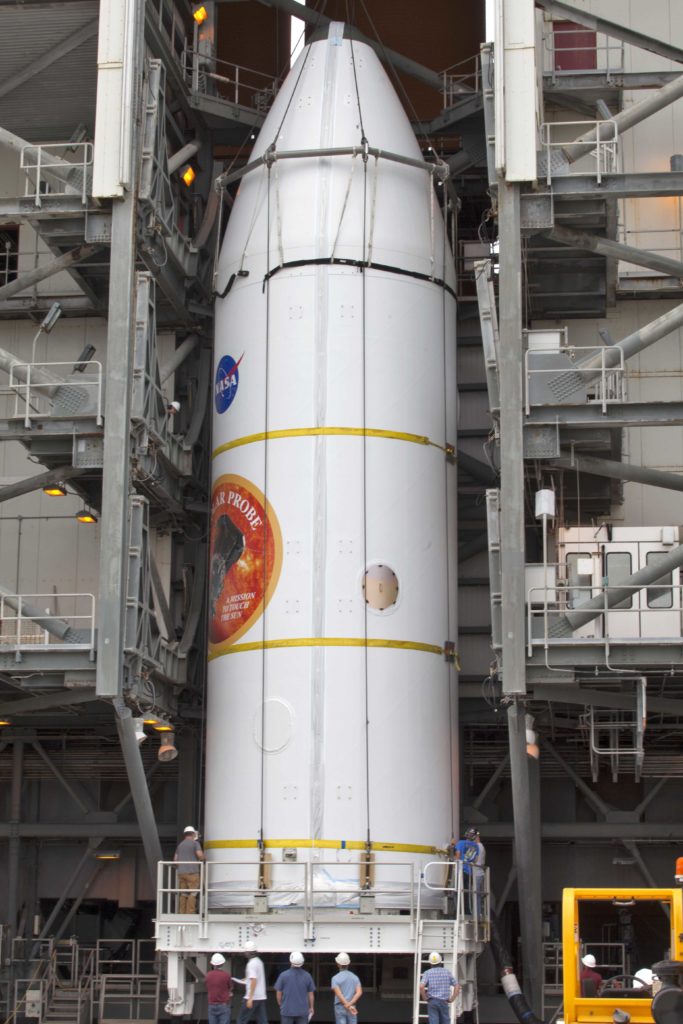

News
NASA spacecraft ready for voyage to the Sun on SpaceX competitor’s biggest rocket (Update)
Update: Issues with rocket and ground support hardware ran down the August 11 launch window. ULA scrubbed the attempt and has recycled the launch to August 12, 3:31 am EDT/07:31 UTC. The second attempt will again be streamed by NASA TV.
#DeltaIV Parker #SolarProbe launch is planned for Sunday, Aug. 12, from Space Launch Complex-37 at Cape Canaveral Air Force Station. The forecast shows a 60 percent chance of favorable weather conditions for launch. The launch time is 3:31 a.m. ET. https://t.co/IUd13yZFEx
— ULA (@ulalaunch) August 11, 2018
Teslarati photographer Tom Cross is on the ground in Cape Canaveral, Florida ahead of what will most certainly be a spectacular launch of NASA’s sun-bound Parker Solar Probe atop SpaceX competitor ULA’s (United Launch Alliance) Delta IV Heavy, the world’s second most powerful operational rocket.
https://twitter.com/_TomCross_/status/1028082435936997376
Second only to SpaceX’s recently-debuted Falcon Heavy rocket, the Delta IV Heavy (DIVH) is a massive beast of a launch vehicle made up of three single-engine boosters that produce more than 2.1 million pounds of thrust at liftoff. As a side-effect of the rocket’s liquid hydrogen and oxygen fuel choice, DIVH’s booster bodies are a solid 5 meters in diameter (40% wider than Falcon 9) to account for the fact that hydrogen is far less energy-dense than kerosene (Falcon 9’s fuel of choice).

The launch of NASA’s Parker Solar Probe (PSP) will be Delta Heavy’s 10th launch since it first debuted in 2004, giving a taste for how infrequently the rocket typically launches – averaging less than once a year. The target of Parker Solar Probe’s mission happens to be the Sun itself, more specifically the dispersed aura of plasma (superheated gas) – known as the solar corona – that surrounds it.
In pursuit of “touching the surface of the sun”, PSP will wind up becoming the fastest human-made object in history, reaching velocities upwards of 200 km/s (120 mi/s) at a distance from the sun of just 6 million km (3.7 million mi). At that unfathomable speed, Parker Solar Probe would travel from Los Angeles to Manhattan in 20 seconds.
- Delta IV Heavy seen launching a classified NRO payload in 2013. (ULA)
- The first stage of Parker Solar Probe’s Delta IV Heavy rocket prepares to be lifted vertical. (ULA)
- Parker Solar Probe is encapsulated inside Delta IV Heavy’s payload fairing ahead of launch. (NASA)
- Encapsulated in its payload fairing, Parker Solar Probe is craned atop Delta IV Heavy in a process known as vertical integration. (NASA)
That close to the sun, the temperatures PSP will be subjected to are extraordinary, thanks to the fact that sunlight will be a full 500 times more powerful than the light that reaches us humans on and around Earth. To survive temperatures as high as high as 1,377℃ (2,500°F) and keep its highly-sensitive scientific instruments and spacecraft bits at a more reasonable 29.4℃ (85°F), PSP will bring along a heat shield just big enough for the craft to hide behind.
ULA’s Delta IV Heavy is currently scheduled to launch NASA’s Parker Solar Probe from Cape Canaveral at 12:33 am PDT/3:33 am EDT/07:33 UTC. Follow along in real-time with NASA TV’s live coverage of the launch and stay tuned for photos from Teslarati photographer Tom Cross’ remote cameras.
For prompt updates, on-the-ground perspectives, and unique glimpses of SpaceX’s rocket recovery fleet (including fairing catcher Mr Steven) check out our brand new LaunchPad and LandingZone newsletters!

Elon Musk
Elon Musk and Tesla AI Director share insights after empty driver seat Robotaxi rides
The executives’ unoccupied tests hint at the rapid progress of Tesla’s unsupervised Robotaxi efforts.

Tesla CEO Elon Musk and AI Director Ashok Elluswamy celebrated Christmas Eve by sharing personal experiences with Robotaxi vehicles that had no safety monitor or occupant in the driver’s seat. Musk described the system’s “perfect driving” around Austin, while Elluswamy posted video from the back seat, calling it “an amazing experience.”
The executives’ unoccupied tests hint at the rapid progress of Tesla’s unsupervised Robotaxi efforts.
Elon and Ashok’s firsthand Robotaxi insights
Prior to Musk and the Tesla AI Director’s posts, sightings of unmanned Teslas navigating public roads were widely shared on social media. One such vehicle was spotted in Austin, Texas, which Elon Musk acknowleged by stating that “Testing is underway with no occupants in the car.”
Based on his Christmas Eve post, Musk seemed to have tested an unmanned Tesla himself. “A Tesla with no safety monitor in the car and me sitting in the passenger seat took me all around Austin on Sunday with perfect driving,” Musk wrote in his post.
Elluswamy responded with a 2-minute video showing himself in the rear of an unmanned Tesla. The video featured the vehicle’s empty front seats, as well as its smooth handling through real-world traffic. He captioned his video with the words, “It’s an amazing experience!”
Towards Unsupervised operations
During an xAI Hackathon earlier this month, Elon Musk mentioned that Tesla owed be removing Safety Monitors from its Robotaxis in Austin in just three weeks. “Unsupervised is pretty much solved at this point. So there will be Tesla Robotaxis operating in Austin with no one in them. Not even anyone in the passenger seat in about three weeks,” he said. Musk echoed similar estimates at the 2025 Annual Shareholder Meeting and the Q3 2025 earnings call.
Considering the insights that were posted Musk and Elluswamy, it does appear that Tesla is working hard towards operating its Robotaxis with no safety monitors. This is quite impressive considering that the service was launched just earlier this year.
Elon Musk
Starlink passes 9 million active customers just weeks after hitting 8 million
The milestone highlights the accelerating growth of Starlink, which has now been adding over 20,000 new users per day.

SpaceX’s Starlink satellite internet service has continued its rapid global expansion, surpassing 9 million active customers just weeks after crossing the 8 million mark.
The milestone highlights the accelerating growth of Starlink, which has now been adding over 20,000 new users per day.
9 million customers
In a post on X, SpaceX stated that Starlink now serves over 9 million active users across 155 countries, territories, and markets. The company reached 8 million customers in early November, meaning it added roughly 1 million subscribers in under seven weeks, or about 21,275 new users on average per day.
“Starlink is connecting more than 9M active customers with high-speed internet across 155 countries, territories, and many other markets,” Starlink wrote in a post on its official X account. SpaceX President Gwynne Shotwell also celebrated the milestone on X. “A huge thank you to all of our customers and congrats to the Starlink team for such an incredible product,” she wrote.
That growth rate reflects both rising demand for broadband in underserved regions and Starlink’s expanding satellite constellation, which now includes more than 9,000 low-Earth-orbit satellites designed to deliver high-speed, low-latency internet worldwide.
Starlink’s momentum
Starlink’s momentum has been building up. SpaceX reported 4.6 million Starlink customers in December 2024, followed by 7 million by August 2025, and 8 million customers in November. Independent data also suggests Starlink usage is rising sharply, with Cloudflare reporting that global web traffic from Starlink users more than doubled in 2025, as noted in an Insider report.
Starlink’s momentum is increasingly tied to SpaceX’s broader financial outlook. Elon Musk has said the satellite network is “by far” the company’s largest revenue driver, and reports suggest SpaceX may be positioning itself for an initial public offering as soon as next year, with valuations estimated as high as $1.5 trillion. Musk has also suggested in the past that Starlink could have its own IPO in the future.
News
NVIDIA Director of Robotics: Tesla FSD v14 is the first AI to pass the “Physical Turing Test”
After testing FSD v14, Fan stated that his experience with FSD felt magical at first, but it soon started to feel like a routine.

NVIDIA Director of Robotics Jim Fan has praised Tesla’s Full Self-Driving (Supervised) v14 as the first AI to pass what he described as a “Physical Turing Test.”
After testing FSD v14, Fan stated that his experience with FSD felt magical at first, but it soon started to feel like a routine. And just like smartphones today, removing it now would “actively hurt.”
Jim Fan’s hands-on FSD v14 impressions
Fan, a leading researcher in embodied AI who is currently solving Physical AI at NVIDIA and spearheading the company’s Project GR00T initiative, noted that he actually was late to the Tesla game. He was, however, one of the first to try out FSD v14.
“I was very late to own a Tesla but among the earliest to try out FSD v14. It’s perhaps the first time I experience an AI that passes the Physical Turing Test: after a long day at work, you press a button, lay back, and couldn’t tell if a neural net or a human drove you home,” Fan wrote in a post on X.
Fan added: “Despite knowing exactly how robot learning works, I still find it magical watching the steering wheel turn by itself. First it feels surreal, next it becomes routine. Then, like the smartphone, taking it away actively hurts. This is how humanity gets rewired and glued to god-like technologies.”
The Physical Turing Test
The original Turing Test was conceived by Alan Turing in 1950, and it was aimed at determining if a machine could exhibit behavior that is equivalent to or indistinguishable from a human. By focusing on text-based conversations, the original Turing Test set a high bar for natural language processing and machine learning.
This test has been passed by today’s large language models. However, the capability to converse in a humanlike manner is a completely different challenge from performing real-world problem-solving or physical interactions. Thus, Fan introduced the Physical Turing Test, which challenges AI systems to demonstrate intelligence through physical actions.
Based on Fan’s comments, Tesla has demonstrated these intelligent physical actions with FSD v14. Elon Musk agreed with the NVIDIA executive, stating in a post on X that with FSD v14, “you can sense the sentience maturing.” Musk also praised Tesla AI, calling it the best “real-world AI” today.












